Catherine Fasciato paints water wonderfully, particularly the ocean waves along the California coastline, where she lives. Her advice for painting convincing waves and seascapes is simple, but devilishly difficult.
As Fasciato did last week in our piece on painting rocks, she cites Don Demers as a source for wisdom on painting water. Demers is one of the foremost painters of marine scenes, but his advice, and Fasciato’s as well, is to look hard and carefully. “Don Demers says to look and see what the colors are,” Fasciato says. “For example, the horizon of the ocean is not blue, but often a blue-gray with a bit of green. But look — look at it and figure it out.”
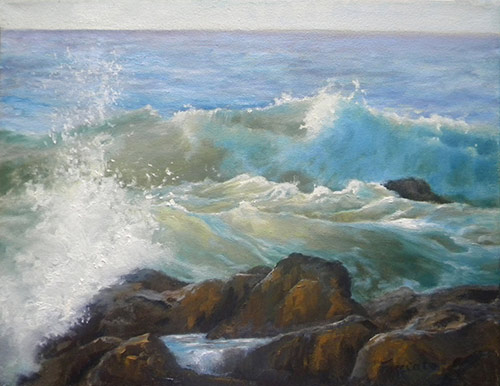
Another truth painters need to remember is that water is usually moving. This is particularly important to keep in mind when painting foam or the crest of waves. The highlights seem close to pure white, but artists know that rarely is a white pure.
“I add just a bit of cadmium red and cadmium lemon yellow to knock down the white a bit,” says Fasciato. “And shadow white has blue in it. But it’s important to apply the white after you apply the darks of the water, then work into the darks. Think of edges — don’t just lay them down. Waves are moving, and movement is soft edges.”
[Related: Learn how to paint seascapes with these art video workshops]
In fact, Fasciato switches to a very soft brush when applying whites so they sit on top and have softer edges.
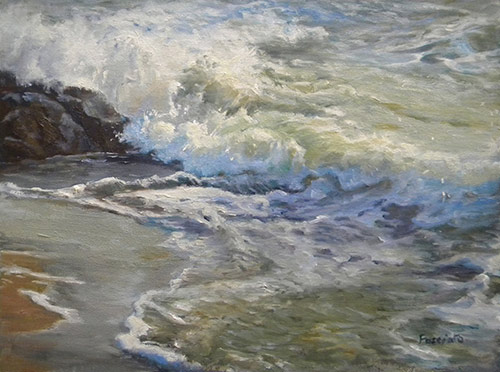
The artist demurs when called an expert on water and waves. “I’m always working at it,” she says. Currently, Fasciato is focused on what happens right at the shoreline. “I’m a bit obsessed these days with how the water moves to and from the sand, the champagne bubbles that appear.”
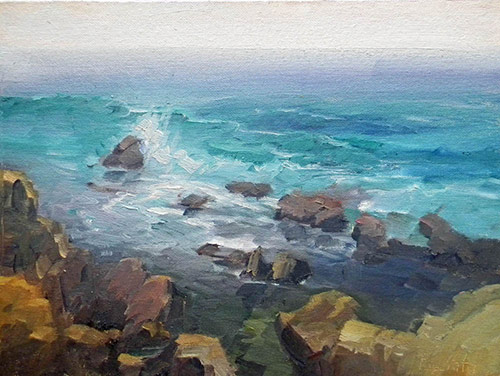
One reason Fasciato finds painting waves and water so compelling is that the scene is constantly changing. “Every day is different — every hour is different,” she says. “So look at it and find out what the ocean is doing, how it is moving. What kind of day is it? What kind of waves do you have today? What wind? What tide?”
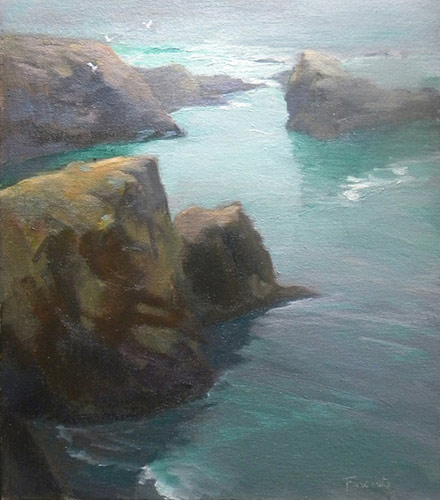
She’s both a plein air and a studio painter, and Fasciato finds that plein air studies are extremely helpful in painting an ocean scene back in the studio. “Plein air studies help me understand what the waves are doing, and they focus on one wave, which helps.”
Sometimes the plein air study will have a somewhat surreal color in it. Fasciato has learned to trust her plein air work in these cases. “One day the horizon was a pinky blue; it was a foggy day,” she recalls. “And the water was emerald green, then dark green, then purple, then a swirl of green on top of it. But when I looked at my reference photos, my camera got the same colors.
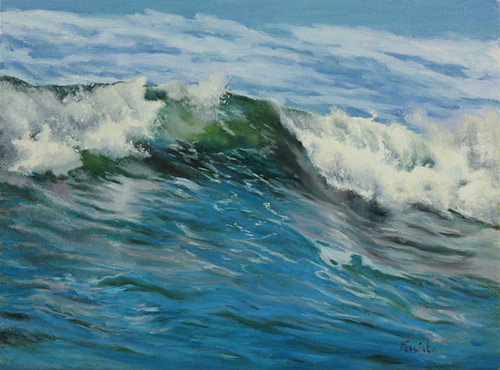
“Just paint what you see.”
This article was originally published in 2016
Visit EricRhoads.com to find out all the amazing opportunities for artists through Streamline Publishing, including:
– Online art conferences such as Plein Air Live
– New video workshops for artists
– Incredible art retreats
– Educational and fun art conventions, and much more.
> Subscribe to Plein Air Today, a free newsletter for artists
> Subscribe to PleinAir Magazine so you never miss an issue

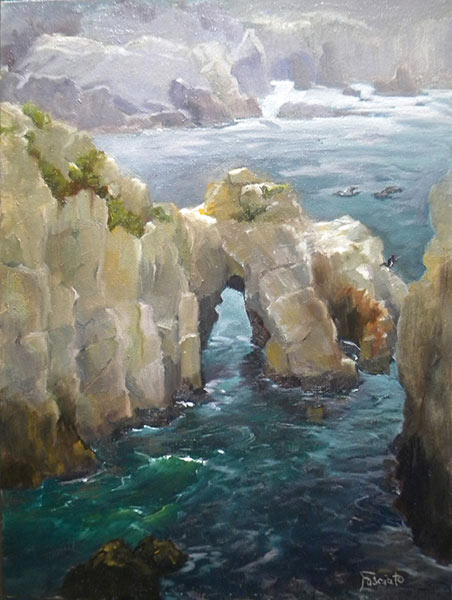




[…] When not busy satisfying his obligations as a cardiologist, Peter Gregor, MD, of Kentucky enjoys painting. While he likes to paint a variety of subjects, Peter Gregor, MD’s favorite thing to paint is seascapes. […]